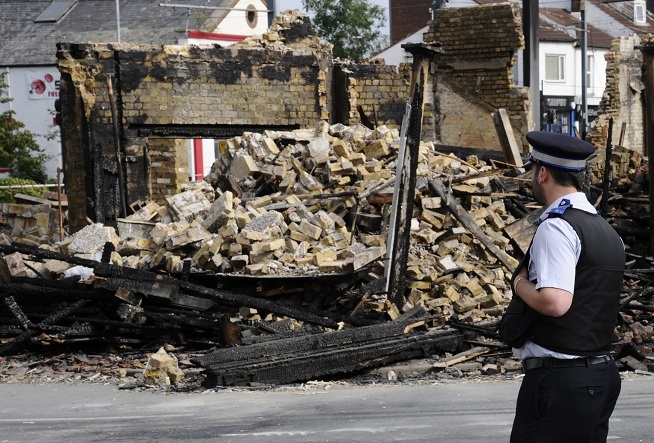 Not many folk are aware of it, but there is an official riots inquiry and it has
delivered its interim report today. Its conclusions are pretty clichéd and not really worth studying; David Lammy’s book is infinitely
more instructive and readable. But it does produce a few figures about the rioters — or, I should say, those arrested mainly because they didn’t think to cover their face. I looked at
this for my Telegraph column last week. Here’s my summary of today’s
report:
Not many folk are aware of it, but there is an official riots inquiry and it has
delivered its interim report today. Its conclusions are pretty clichéd and not really worth studying; David Lammy’s book is infinitely
more instructive and readable. But it does produce a few figures about the rioters — or, I should say, those arrested mainly because they didn’t think to cover their face. I looked at
this for my Telegraph column last week. Here’s my summary of today’s
report:
1. Broken Britain. Some 46 per cent of those arrested live in the lowest ‘decile’. These guys are not working class, but welfare class. Abandoned by politicians because
they have no chance of nudging over the supposed ‘poverty threshold’ and they tend not to vote either. An analysis by Experian, a credit rating agency, suggests 71 per cent of the riots
occurred in the worst 10 per cent areas for social cohesion.
2. Failed by schools. Two-thirds are categorised as having ‘special educational needs’. I wonder how much of this is real, and how much reflects the deplorable tendency of teachers to simply categorise rowdy kids as having ADD or some such. In London, almost all rioters failed to achieve the basic school-leaving qualification (i.e. 5 A*-Cs in GCSE). A third of them had been kicked out of school, at least temporarily, during 2009/10.
These sink schools have a different name in America: ‘failure factories’. Places where children are failed, routinely. It’s time we all got angrier about the damage that these schools inflict on communities, and on the people whom they fail to educate.
3. Having previous. Four-fifths of adults brought before the courts had a previous conviction or caution. The inquiry also released figures showing the link between deprivation and
crime:

4. Riots: an Equal Opportunities Employer. The Inquiry rightly points out that ‘these were not race riots’ (despite what Diane Abbott says) and they ‘differed
considerably from riots in 1981 and 1985…. In most cases, the primary motivation for rioting was theft.’
5. Gangs. It is on shakier ground when it says that 13 per cent of offenders were gang members (19 per cent in London), therefore gangs were not really a factor. What proportion of the general population counts as ‘gang members’? I suspect the data, properly analysed, will show gang members ridiculously over-represented here.
So what will our policymakers say in response? Nothing, I suspect: riots were so 2011 and we’re on to the next crisis. I’ll be pleasantly surprised if there’s a single measure in tomorrow’s Pre-Budget Report which goes some way to defusing a social bomb that will likely explode again before another year has passed.







Comments